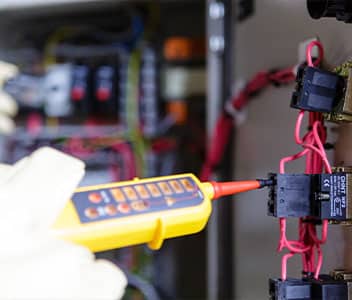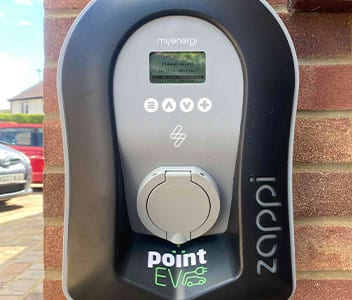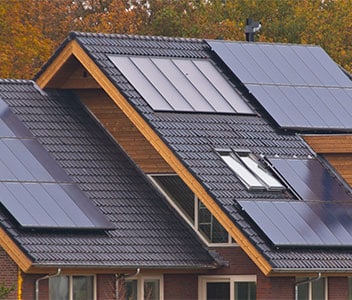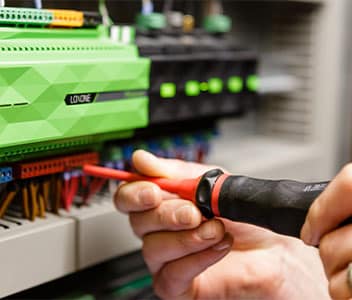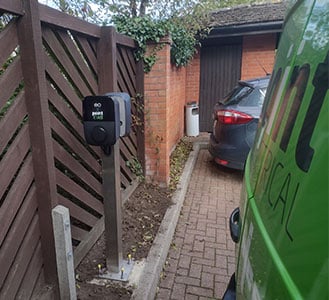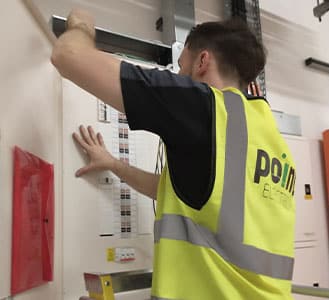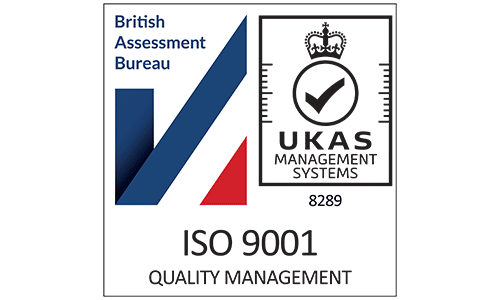Lighting Control Systems
When you think of lighting control systems, the most obvious are light switches. You’ll find them in homes, offices, warehouses, shops and many more properties. For years, they’ve been the only option, but that’s not the case anymore – and switches aren’t always the best option. We’ve taken a look at what lighting control solutions are available, and where they might be most useful. Some of these options can also help with reducing the amount of energy you use, which can save you money in the long run.
Using light switches
Light switches can be found in almost every building with lights. They are one of the simplest and most obvious ways to turn lights on or off. They do mean that, without rewiring work or additional light sources such as lamps, you are restricted to what you have when moving into the building – whether that’s residential or commercial.
Light switches
The most common type of lighting control system are light switches. Usually as a button on the wall, you can turn either single or multiple lights on at once – depending on how the wiring has been planned. This can sometimes lead to multiple switches in a room for different lights or combinations of lights.
Dimmers
Another type of light switch are dimmers. Not only can these be pressed to switch a light on or off, but by turning the dial, you can brighten a room to the desired level. This is perfect for cloudy days or early evenings when just a little light is needed. Unlike traditional light switches, where you have to choose between on and off, you can control the amount of light in a room to suit your needs or mood. They are less common in commercial properties, but they can be useful in some settings where mood and atmosphere are important.
Sensors as a lighting control system
While not a replacement for light switches, you can add another lighting control system to give you more flexibility with sensors. Depending on the type of sensor, it can track different factors to activate or deactivate lights, which can be useful in both commercial and residential settings. These sensors cut down on the amount of times lights are in use, which can provide some savings in your electricity bills.
Light level sensors
It’d be perfect if your lights could turn on only when needed – without you having to do anything. That’s what happens with light level sensors as a lighting control solution.
Whether it’s responding to lowering light levels in the evening or some dark clouds have blown across, these sensors will detect the drop in natural light and switch on lights to make sure you can see clearly, whether you’re relaxing at home or at work in the office. They can be set to different levels to adjust to your preferences and needs.
Motion sensors
Used both indoors and out, motion sensors are a great way to control lighting only to be used for set periods of times. They can light an area that someone walks through or where there is movement, which helps in places where people aren’t always going to be there. They usually run on a timer or have a reverse function to automatically turn the lights off. This is after enough time has passed for people to leave the area or when no motion is detected.
Occupancy sensors
A more modern solution is a sensor that detects how many people are in a room or space and activating the lights. This sensor removes the need to turn lights on with a switch at all and usually uses heat to determine if anyone is in the room. Unlike motion sensors, occupancy sensors allow you to sit at a desk or watch a movie, where there would be less movement, without the lights going off. They are good for minimising the amount of time lights are spent on by forgetting to switch them off when leaving a room.
Timers to control lights
One way to control the amount of time lights remain on is by using a timer system. These can be set to a time chosen by you and are helpful in not only switching lights off when not needed, but can also make a home or office look like it’s in use or occupied when they’re not. This is a useful security precaution by acting as a deterrent.
Countdown timers
The most common time system used with lighting is a countdown. This starts a timer from the moment the lights are switched on – or when a specific setting is applied – to automatically turn lights off at the end. This is quite common in public spaces and facilities, where lights are often left one when no one is using these areas, but commercial properties can benefit from this, too, especially in hallways where there isn’t always movement. This is a cost-effective way of adding basic lighting controls but sensors are becoming more popular and are a more efficient way of controlling energy usage in areas where lighting is only needed at specific times.
Clock timers
Clock timers allow you to set your lights to switch on or off at specific times of the day. This is useful for when you want to have the lights on to wake up to, if that works for you, or to welcome employees to work each morning. It also lets you keep the lights on until a certain time, which is something you’ll see quite often on office buildings and other commercial properties.
Smart lighting control solutions
As technology has improved, so have new lighting control solutions that give us even more control over our lights. New systems and solutions are constantly being thought up, tested and installed in homes and commercial buildings everywhere, and bring bigger savings by ensuring lights are only used when needed. These systems such as Lutron, Rako, Loxone, KNX and many more, all allow for clever controlled lighting systems which are fully programmable. This lets you integrate all the controls mentioned above to help optimise lighting useage and output. Along with real-time energy monitoring, you could actually automate almost anything with these powerful control systems.
Invest in a new lighting control system
New lighting control systems can be installed at commercial properties or at home, and they can make big changes to your property. Not only will the energy savings you’ll make be significant, but the convenience is worthwhile, too. It takes a bit of research to decide what works best for you, but we believe it’s worth the investment.
To find out more about lighting control systems that can transport you into the future, as well as help you save energy, get in touch with our team today.
